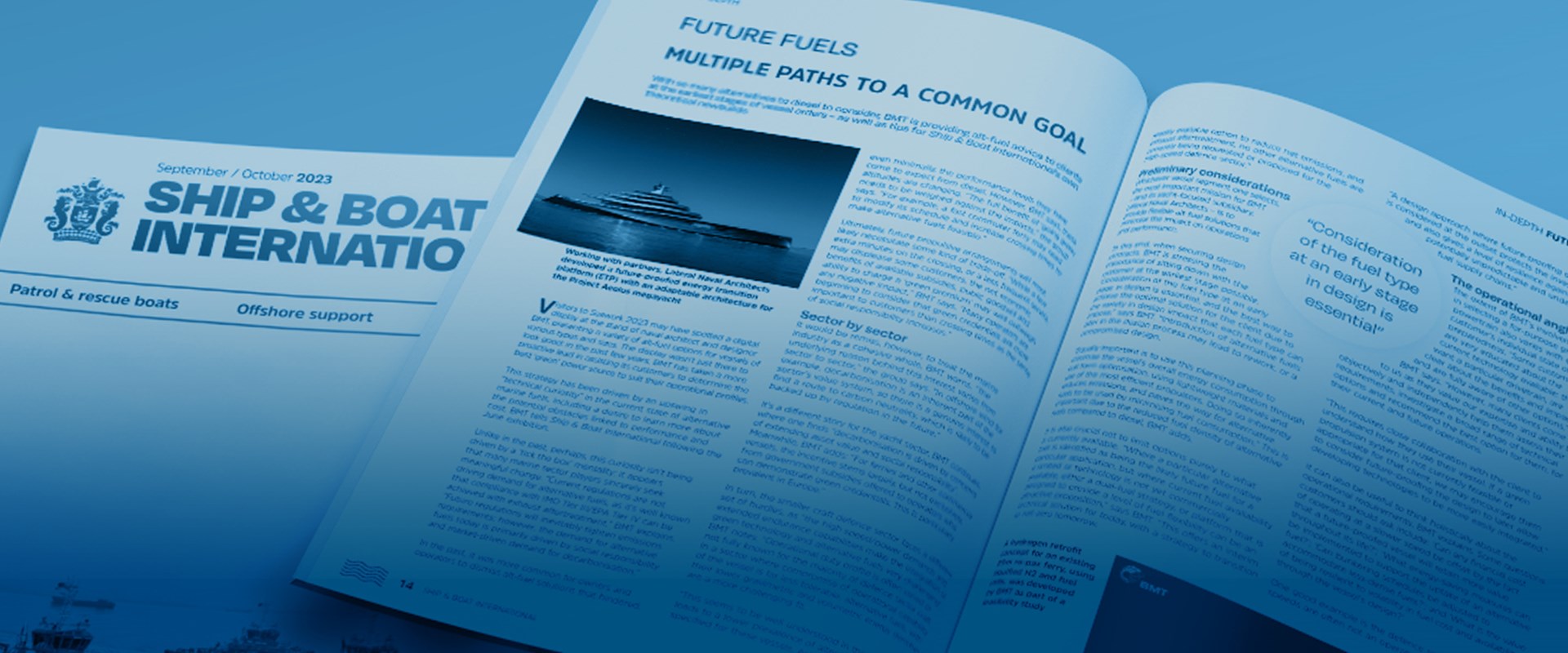
Future Fuels Multiple Paths to a Common Goal
In-depth interview by Martin Conway, editor of The RINA Ship and Boat International publication
5 October 2023
Visitors to Seawork 2023 may have spotted a digital display at the stand of naval architect and designer BMT, presenting a variety of alt-fuel options for vessels of various types and sizes. The display wasn’t just there to look good: in the past few years, BMT has taken a more proactive lead in assisting its customers to determine the best ‘green’ power source to suit their operational profiles.
This strategy has been driven by an upswing in “technical curiosity” in the current state of alternative marine fuels, including a desire to learn more about the potential obstacles linked to performance and cost, BMT tells Ship & Boat International following the June exhibition. Unlike in the past, perhaps, this curiosity isn’t being driven by a ‘tick the box’ mentality: it appears that many marine sector players sincerely seek meaningful change. “Current regulations are not driving demand for alternative fuels, as it’s well known that compliance with IMO Tier III/EPA Tier IV can be achieved with exhaust aftertreatment,” BMT explains. “Future regulations will inevitably tighten emissions requirements; however, the demand for alternative fuels today is primarily driven by social responsibility and market-driven demand for decarbonisation.”
In the past, it was more common for owners and operators to dismiss alt-fuel solutions that hindered, even minimally, the performance levels they have come to expect from diesel. However, BMT says, these attitudes are changing.
“The full benefit of ‘going green’ needs to be weighed against the impacts,” the group says. “For example, a fast commuter ferry may need to modify its schedule and increase crossing times to make alternative fuels feasible.” Ultimately, future propulsive arrangements will most likely necessitate some kind of trade-off. “While a few extra minutes on the crossing, or a less frequent service, may displease some customers, the net economic benefits of available subsidies, public goodwill and ability to charge a ‘green premium’ may well outweigh any negative impact,” BMT says. “Many operators are beginning to consider that green credentials are more important to customers than crossing times as the sense of social responsibility increases.“
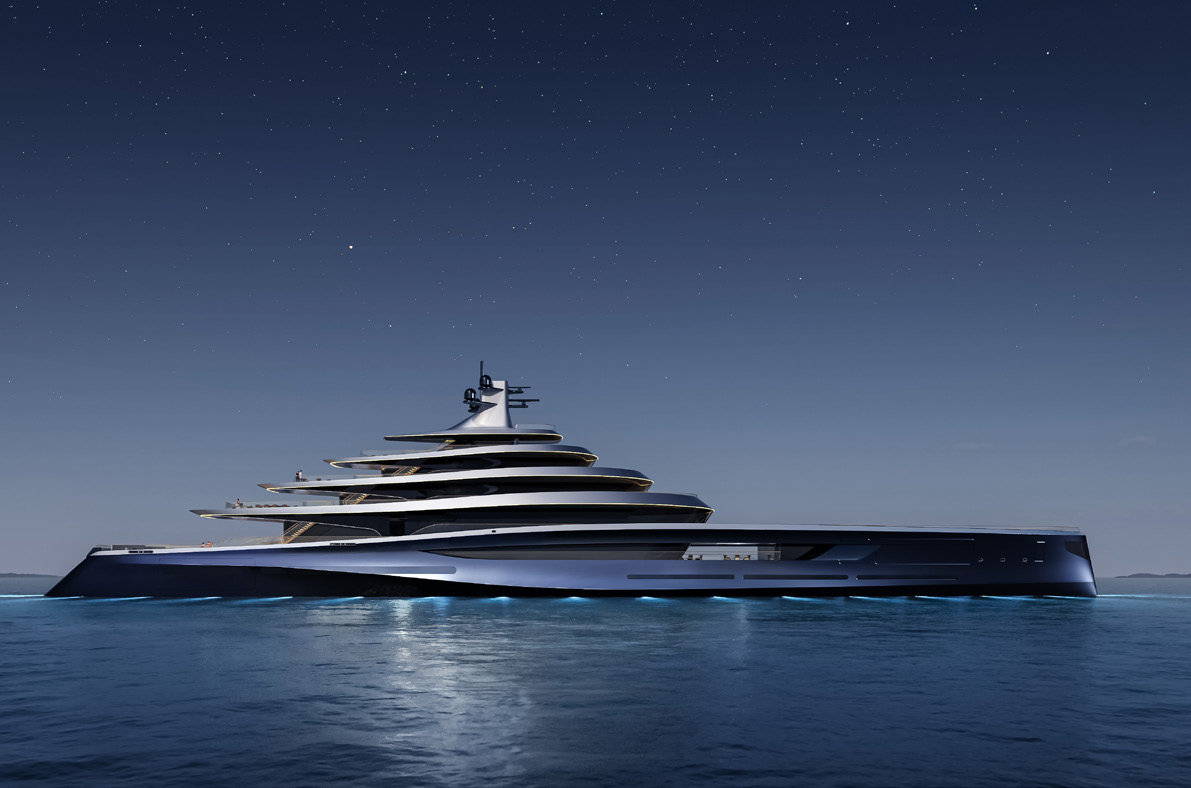
It would be remiss, however, to treat the marine industry as a cohesive whole, BMT warns.
“The underlying reason behind this interest varies from sector to sector, in offshore wind for example, decarbonisation is an inherent part of the sector’s value system, so there is a genuine interest to find a route to carbon neutrality, which is likely to be backed up by regulation in the future.”
It’s a different story for the yacht sector, BMT continues, where one finds “decarbonisation is driven by concerns of extending asset value and social responsibility”. Meanwhile, BMT adds: “For ferries and other commercial vessels, the incentive stems largely, but not exclusively, from government subsidies offered to operators who can demonstrate green credentials. This is particularly prevalent in Europe.”
In turn, the smaller craft defence sector faces a different set of hurdles, as “the high speed/power demands and extended endurance capabilities make the integration of green technology and alternative fuels very challenging”, BMT notes. “Operational duty profile is often varied or not fully known for the majority of defence sector craft. In a sector where compromise of operational capability of the vessel is far less tolerable, alternative fuels, with their lower gravimetric and volumetric energy densities, are a more challenging fit.
“This seems to be well understood in the sector, and leads to a lower prevalence of alternative fuels being specified for these vessels. Aside from HVO, which is a readily available option to reduce net emissions, and exhaust aftertreatment, no other alternative fuels are currently being requested or proposed for the high-speed defence sector.”
Whichever vessel segment one selects, the most important mission for BMT – and its yacht-focused subsidiary, Lateral Naval Architects – is to provide flexible alt-fuel solutions that minimise the impact on operations and performance. To this end, when securing design contracts, BMT is stressing the importance of sitting down with the customer at the earliest stage possible.
“Consideration of the fuel type at an early stage in design is essential, and the best way to achieve the optimal solution for the client due to the variety in design impact that each fuel type can impose,” says BMT. “Introduction of alternative fuels later in the design process may lead to rework, or a compromised design."
“Equally important is to use this planning phase to minimise the vessel’s overall energy consumption through hull form optimisation, using lightweight materials and use of the most efficient propulsors. Doing so inherently reduces emissions, and paves the way for alternative fuels to be used by minimising fuel consumption.” This is important due to the reduced fuel density of alternative fuels compared to diesel, BMT adds. It is also crucial not to limit options purely to what is currently available. “Where a particular alternative fuel is identified as being the likely future fuel for a particular application, but where current fuel availability is limited or technology is not yet commercially available, either a dual-fuel strategy, or platform that is designed to provide a level of fuel flexibility can be an attractive proposition,” says BMT. “This offers an interim technical solution for today, with a strategy to transition to net-zero tomorrow."
“A design approach where future-proofing of the asset is considered at the outset protects the investment, and also gives a level of resilience against potentially unpredictable and undeveloped fuel supply chains.”
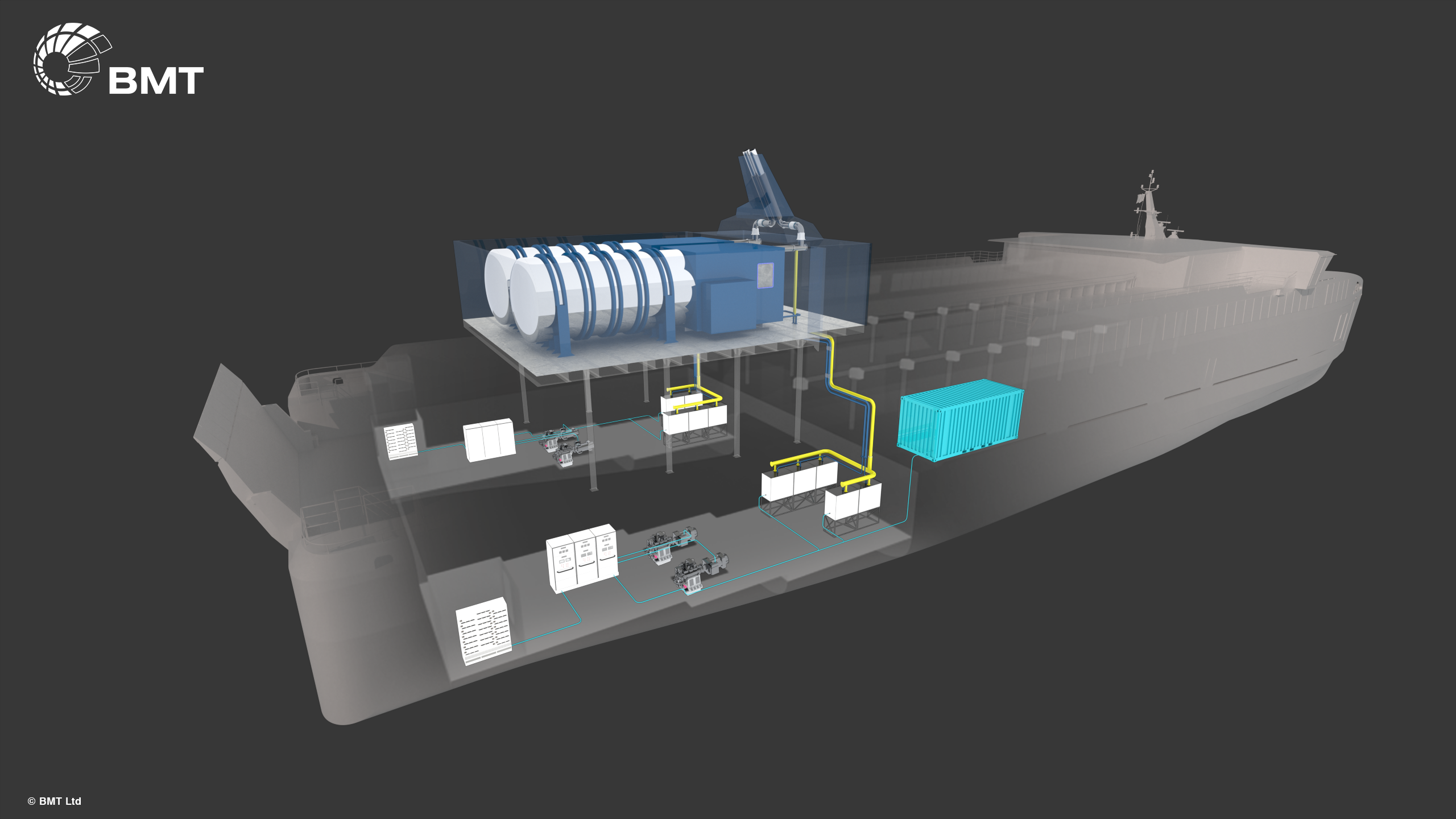
The extent of BMT’s involvement in selecting a for-purpose green powertrain also varies with each customer’s individual state of preparedness. “Some customers are very educated about the current technology available: they want a particular drivetrain, are clear about the benefits and impacts, and are fully aware of other options,” BMT says. “However, many clients come to us as they value our expertise and ability to objectively and independently help them assess their requirements, investigate a broad range of technical options and recommend the best option for them, for their current and future operations.
“This requires close collaboration with the client to understand how they use their vessel. If a green propulsion system is not currently feasible or appropriate for that client, we may encourage them to consider future-proofing the design to later allow developing technologies to be more easily integrated.”
It can also be useful to think holistically about the operational requirements, BMT explains. Some questions customers should ask include: ‘Can any financial cost of operating at a slower speed be offset by the fact that a future-proofed vessel will retain more value throughout its life?’; ‘What energy-saving measures can be implemented to support the uptake of an alternative fuel?’; ‘Can bunkering schedules be adjusted to accommodate less dense fuels?’; and ‘What is the value of being resilient to volatility in fuel cost and availability through the vessel’s design?’ One good example is the defence sector, where slower speeds are often not an operational option, due to the nature of these vessels’ work. “A robust assessment of the true speed requirement can prevent a vessel from becoming ‘over-specced’,” BMT says.
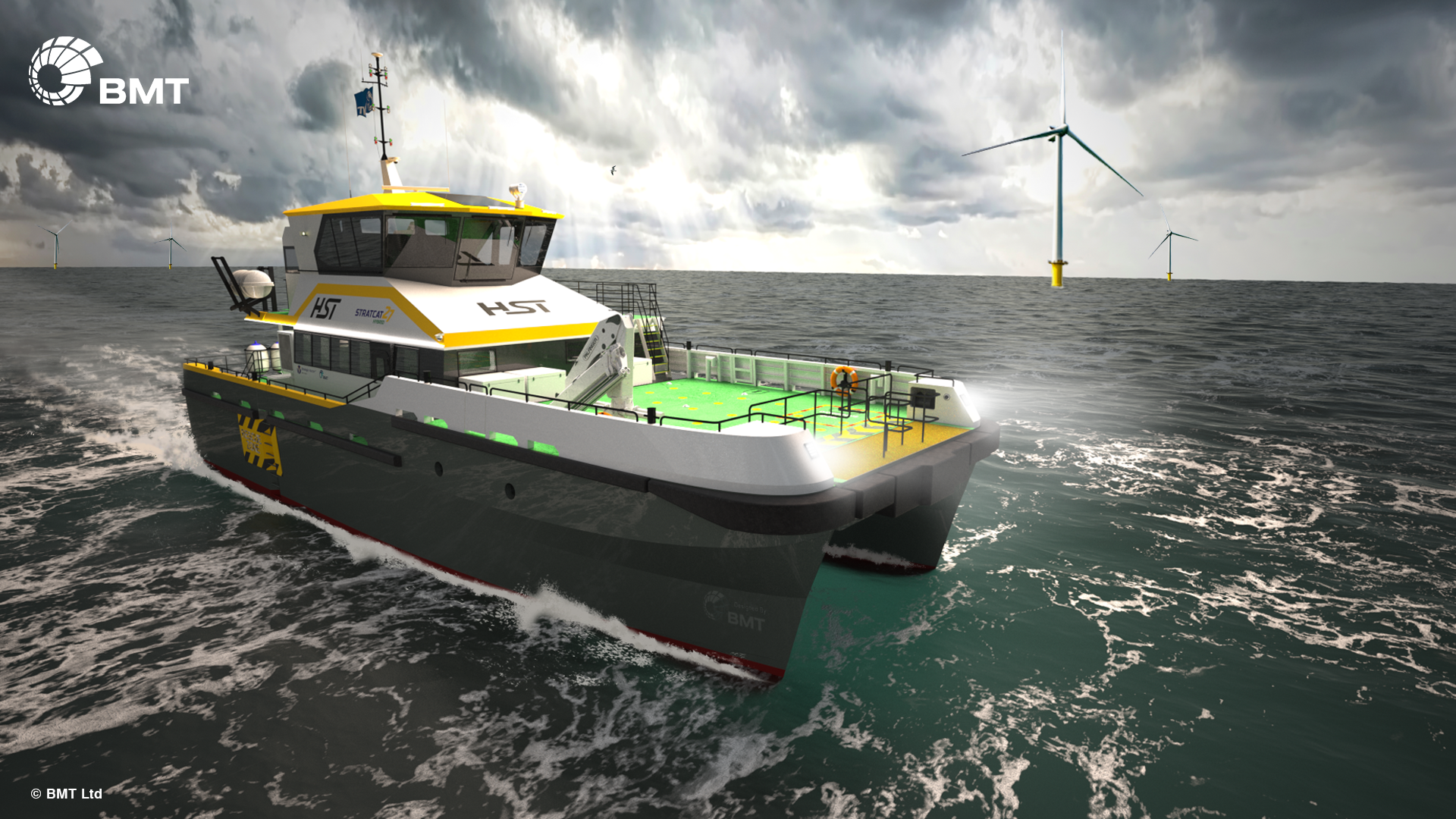
With the above in mind, Ship & Boat International asked BMT which alt-fuels it would pick as the strongest candidates for each segment in the sub-100m boat market. Acknowledging that there is currently “no ‘silver bullet’ for a replacement to diesel,” BMT replies:
“It is unlikely that one alternative fuel technology will fit all boat options ranging from 8-100m, as the available space varies considerably.”
Other influencing factors include the development of fuel supply infrastructure and the potential to fully eliminate greenhouse gas (GHG) emissions – something that can’t be said for those alt-fuel production processes that currently rely on fossil fuels to achieve their ‘green’ end products. “Consequently, we see the future being a diverse spectrum of solutions, moving from a homogenous-fuel based economy to a multi-fuel economy, where the most appropriate fuel is selected for each application,” BMT says. Nonetheless, the group opines on some of the more popular alt-fuel types that have been vaunted in the past five years within the industry.
First off, BMT mentions diesel-battery hybrid solutions that incorporate HVO or synthetic fuels. “Utilising batteries where appropriate, and burning HVO or synthetic fuel, is a low-risk option to achieve large reductions in carbon emissions in the short to medium term. The use of batteries in a system like this needs to be carefully considered, with a strong justification for inclusion, that outweighs the increased system losses incurred through electrification. “However, where this is justifiable, a battery-hybrid system can provide significant overall fuel savings across the operational profile, and provide zero emissions [at-vessel] and silent running in sensitive areas. This solution would likely be the most appropriate for small high-speed vessels for the foreseeable future, potentially evolving to the inclusion of small onboard fuel cells to provide emission-free battery recharging, to extend emission-free range in key geographical regions as needed.” HVO-fuelled battery-hybrid solutions have been installed on several BMT-designed CTVs, and also formed the basis for the Lateral-designed concept Project Kairos: the concept for a 90m eco-yacht.
BMT continues: “For vessels with a predictable and regular operating profile, where sufficient charging opportunity exists, batteries are an attractive option, offering a zero-emission, silent running service.” However, the group notes, the viability of all-electric vessels depends heavily on the vessel’s operating profile, as well as the availability of a reliable charging source. “Shoreside charging infrastructure is a critical consideration when proposing a full-battery solution, leading to a much wider group of stakeholders being involved in these types of projects,” BMT says. “Long-term sustainability of full-battery vessels will come when batteries can be produced sustainably, without the need for rare earth elements, and when shoreside power is provided from fossil-free sources.”
Ferries and commercial vessels typically require a larger volume of energy storage than batteries can currently offer. As a result,
methanol is emerging as a “strong contender” for these vessel types, the group comments.
“Methanol has the potential to reduce well-to-wake carbon emissions by up to 95% if suitable feedstock and production processes are used.”
BMT points out. “Although requiring more space than diesel, it has a smaller impact on the vessel’s design than other alternative fuels such as ammonia or hydrogen. This strong promise is confirmed by development programmes we see from major engine manufacturers to provide a high-speed methanol engine, which is currently missing from the market.”
In the group’s opinion, methanol also demands a “relatively minor impact on vessel design”, making it straightforward and cost-efficient to future-proof newbuilds to be ‘methanol-ready’ – “or pre-installing some systems at build that would be required for conversion; fire detection systems, for example”, BMT explains. Lateral has taken such an approach on the Aeolus concept, in collaboration with Oceanco and technical partners (ABB & MTU), when using the future-proofed Energy Transition Platform (ETP) with an adaptable architecture, enabling the owner to consider multiple alternative configurations and avoid obsolescence.
“For larger vessels that can tolerate the lower energy density of hydrogen storage, hydrogen becomes a more realistic prospect with the obvious attraction of completely zero-emission operations,” BMT says. As such, this could be a feasible choice for short-haul ferries that can accommodate a more frequent bunkering schedule, the group suggests.
“Lateral Naval Architects has also developed feasible yacht concepts operating on liquid green hydrogen,” states BMT. “This is a very challenging proposition and requires very specific design consideration with a high impact to the yacht. However, it’s possible to imagine scenarios where this could become a desirable future option.” Such is the case with the 112m yacht AQUA, developed by Lateral and styled by Sinot Yacht Architecture & Design, which has been developed around a hydrogen-electric propulsion and energy system architecture.
All of the above encompasses just some of the advice that BMT is sharing with its clients, old and new. Getting into the interactive spirit, Ship & Boat International decided it would be interesting to present the designer with four vessel types, for its opinions on the most viable power option for each.
Starting off, let’s take an 18m-long SAR craft, requiring reasonable sprint power in the event of an emergency, but also spending significant amounts of time on standby.
BMT replies: “Due to the size of the vessel, fuel storage would be very limited, and so integrating less dense alternative fuels would be difficult. We would look to recommend a hybrid set-up, maintaining the diesel engines for the high-speed requirement and combining this with electric motors and batteries for the loitering/standby operations.
“The impact of increased weight of batteries, electrical motors and control systems on high-speed operations would need to be quantified and managed carefully to ensure the high-speed operations of the vessel are maintained. The battery size could be reduced by using the motors as generators to recharge batteries during the high-speed operations.”
BMT likens this proposed vessel to MPA Guardian, the 27knots-capable, BMT-designed patrol/rescue boat delivered to the Port of Singapore last year (see Significant Small Ships of 2022 and Ship & Boat International September/October 2022, pages 40-42). BMT cites MPA Guardian as “an example of a vessel using a parallel hybrid installation to full effect”, and adds: “The complex powertrain allows the vessel to run with zero emissions at up to 6knots, or to run the entire vessel [both shaftlines] from just one engine while charging the batteries.
We then asked BMT’s opinion regarding a 26m, 24-pax CTV, conducting daily runs to an offshore wind farm located 80km from shore.
“Our current recommendation to reduce CTV emissions is to use HVO instead of MDO, and to install a diesel-battery hybrid propulsion train to eliminate fuel burnt when loitering,” says BMT. “This combination significantly reduces net carbon emissions, is available today and is already in service on several BMT-designed vessels, including the StratCat 27.”
Designed for Singapore-based shipbuilder Strategic Marine, eight units of the battery-hybrid StratCat 27 series have been produced to date, and several more are under build. This class utilises an onboard battery bank for zero-emissions loitering while at the wind farm, and burns HVO to slash carbon emissions.
“In the short term, our recommendation is to pursue methanol or methanol-ready vessels, as this is a route to net zero that owners can take that does not require the installation of major offshore infrastructure,” BMT says. “The other promising route we see to net zero is offshore charging; a fully electric vessel that recharges offshore. However, this requires significant investment on the part of wind farm builders/owners, which at present we do not see forthcoming.”
By contrast, when ‘green methanol’ is produced, CTV owners can achieve net-zero emissions fairly effortlessly. “The long-term future route is likely to depend on: a) who drives the zero-emission requirement for CTVs – for example, wind farm owners, the regulators or vessel owners/operators; and b) whether charging infrastructure is developed,” BMT says.
Next up, we asked BMT to consider a 40m high-speed passenger ferry. Here, the high frequency of docking cycles combined with a predictable operating profile, reliant on a fixed route, may make this one for battery power.
BMT says: “Depending on turnaround times, fast charging may be required, which brings its own complications with the shoreside and grid integrations. With the additional weight of batteries, there may need to be change in perception of what ‘fast’ means but it is not unrealistic to achieve more than 20knots with the current technology – depending, again, on operating profile.
“In the case of a full-electric ferry, the replacement of the relatively heavy diesel engines [and associated fuel tanks, piping, exhausts, and structural support] with lighter electric motors helps to offset the weight penalty incurred from the batteries.”
Also, with its superior energy density, methanol may become a future option for this ferry type – especially if used in a dual-fuel internal combustion engine, which limits the amount of methanol needed, BMT adds. Currently, though, the group states: “There are no high- speed engines on the market suitable for fast ferry operations – until this gap in the market is resolved, methanol cannot be feasibly considered for a 40m high-speed passenger ferry.”
Finally, we proposed a 50m yacht cruising in the Mediterranean and Caribbean, varying with season.
“Every owner will have different ideas and priorities, and a 50m yacht can cover a wide range of volume and performance requirements,” BMT replies. “The first thing we would do is suggest the owner keep an open mind regarding the length and speed target.
“Taking a ‘typical’ requirement would suggest a dieselelectric hybrid with methanol fuel cells generating electrical power for low-speed electric propulsion and the hotel load. The design could consider using dualfuel- capable engines to allow it to operate on methanol. But in likelihood, to achieve a transatlantic range, it would require diesel fuel tanks, as methanol tanks will be too large to allow an attractive accommodation proposal.”
Such an arrangement would enable CO2 emission reductions of 50-70% compared to a conventionally designed yacht, BMT estimates. There are other avenues. “Less typical solutions could involve azimuthing thrusters operating on a methanol-electric DC grid with solar hybrid thermal electric panels, large battery installations with power provided by methanol generators and/or fuel cells,” BMT says. “Such yachts could be designed to achieve operational net-zero emission with a suitable source of sustainable green bio-methanol.”
BMT qualifies its suggestions for each of the above four vessel types by noting: “Throughout these theoretical vessels, near-term emissions reductions are achieved through batteries or battery-hybrid powertrains, with alternative fuels being a future option. This very much reflects the state of the art with technology at the moment: battery and electrified vessels are significantly ahead in terms of Technology Readiness Level [TRL], influenced heavily by the electrification of the automotive industry.” This probably won’t be the case for too much longer, BMT adds.
“It is recognised that the challenges of vessel range, the fact that diesel-hybrid vessels are not net-zero, and future grid-power challenges mean that a shift to alternative fuels, once the technology is more established and fuels have greater availability, could offer increased capability over battery vessels in most cases.”
IMO’s emissions goals deadline may still seem comfortably distant in the future, but it will likely be upon us before we know it. Considering that 25 years ago this story would have been extremely difficult to put together, other than as a speculative piece, it remains to be seen how each alternative fuel will develop in the run-up to 2050, and whether new solutions will emerge – again, emphasising the importance of future - proofing vessels for unpredicted developments. Can the marine industry realistically meet the 2050 deadline, though? BMT replies:
“It is likely that the ship-side technology to achieve the IMO targets will be possible, as technological solutions are already progressing at pace.” However, the group counters: “The real challenge will be the scale-up and widespread adoption of the technology. The economic and political climate under which this rollout is conducted will be the primary determinant in success, as all alternative fuels will be significantly more expensive to transition to when compared to the current status quo.”
Meaningful incentives, prudent regulatory development and a combination of “solid policy at IMO and ambitious vessel owners/ operators” will help to ensure this transition’s success, BMT adds.
The group cautions, though: “In our view, the IMO goals are unlikely to be reached in totality across all sectors, although it is possible for a significant reduction in emissions. Noting that most shipping emissions are from a small percentage of vessels – namely, cargo-carrying – there is a strong possibility that the older IMO targets are achievable. “The updated targets are far more stringent and will require a more significant investment, while currently the ‘well-to-wake’ [WTW] emissions will still be significant since there is minimal green fuel available.”
This could prove tougher than anticipated, given the marine sector will be competing with the road haulage and aviation sectors for access to these future fuels – and those sectors have big appetites. “For example, there is minimal green ammonia produced in the world currently,” BMT says. “This should be in place before the uptake of ammonia as a fuel, otherwise the WTW emissions will still be significant. HVO or synthetic fuel produced by carbon capture is an effective way forward for highspeed craft with minimal reduction in capability, but production is a significant concern.”
In the interim, knowledge-sharing and design advice should put the various small boat sectors on a good footing to face whichever twists and turns these altfuels take in the next couple of decades.
This article includes contributions from across BMT’s team of naval architects, including James Calver, Adrien Thoumazeau, Jon Cotgreave, Christophe Rident, Steven Lee and Thomas Beard.

James is the Principal Naval Architect within the commercial vessel design sector of BMT, with experience in the concept, class, and production level design of a wide portfolio of commercial vessels. With a Masters degree in Ship Science from the University of Southampton, James leads the Naval Architecture team across the commercial vessel design sector's portfolio.

Adrien graduated with a shipbuilding naval architecture degree in Saint Nazaire, France next to the worlds largest shipyards. He joined the sailing firm VPLP, building up his knowledge on yacht and production catamarans before moving to join the yacht naval architecture’s team at BMT Nigel Gee. Specialising in Superyacht projects, he has been working throughout all the phases of projects, from a blank sheet of paper to sea trials. He seeks out new opportunities to be challenged and brings forward an innovative approach to the clients request. Adrien has been a Naval Architect since his 20s. Having moved into research and development since the formation of Lateral, his role is now a dual one - designing and also collating and distributing new ideas and innovations.

Steven is Lead Naval Architect for Government & Security vessel design within our commercial maritime sector. His broad base of experience throughout all principal design areas has been developed over the past 30 years during the design of; Military High Speed Landing Craft, Special Forces Fast Transit Craft, Military High Speed RIBs, Fast Patrol Vessels, Pilot Boats, Workboats and Passenger Ferries. He leads in the development of new products within the BMT portfolio and provides oversight and support to production detailed design teams. He has worked closely with the UK MoD in numerous roles / projects and is able to apply this knowledge in both the commercial shipping and defence sectors. Steven graduated in Naval Architecture at Southampton Institute, has a diploma in small craft surveying, is a member of RINA and is an Incorporated Engineer of the Engineering Council UK.

Dr. Thomas Beard, Ph.D CEng MIMechE, is a Senior Analysis Engineer at BMT, a chartered engineer, and the clean maritime/alternative fuels lead for Defence at BMT. He obtained a PhD in Hydrogen Safety from Loughborough University, following which he spent several years in industry working on a variety of aspects of ship and submarine design and build. He is a member of the two UK Maritime Hydrogen Working Groups and is on the steering group for a research program on ammonia in maritime. He has published and presented numerous papers on the topic of alternative fuels for maritime and naval platforms.
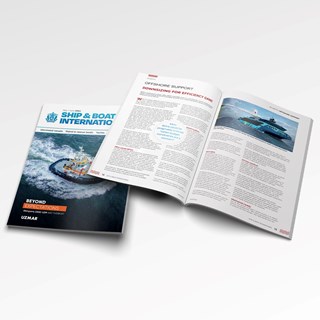
Noel Tomlinson - Maritime Design
Noel Tomlinson shares with SBI valuable insights on how BMT's innovative solution can help vessel operators overcome challenges and ensure a sustainable future for offshore wind operations.
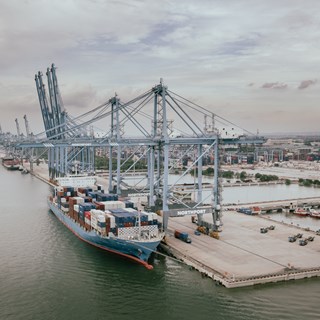
Jaret Fattori
Jaret Fattori's article in Port Strategy discusses how ports are adapting to climate change and IFRS S-2 regulations. Emphasising the shift towards sustainability through digital integration, decarbonisation, and innovative fuel alternatives, he explores the significant role of collaboration in advancing port sustainability and innovation.
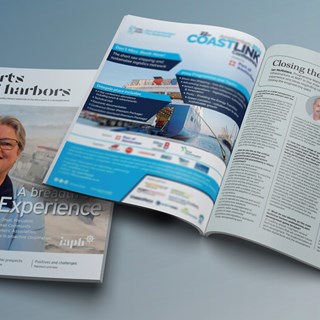
Ian McRobbie
Ian McRobbie, our Programme Manager for Ports and Maritime Infrastructure, was interviewed by Port & Harbors to discuss how infrastructure companies are collaborating with ports to enhance port infrastructure and operations.
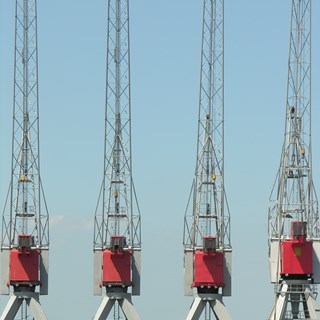
N/A
We address certain key topics that have been brought to our attention by our valued clients during their assessment of inspection reports.